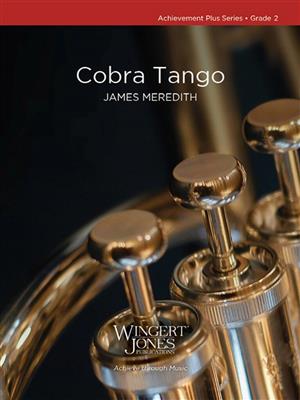Results
-
 £42.50
£42.50Theme from Jag - Bruce Broughton
This TV series continues to be popular and the rousing theme is a sure to be a fun piece for your young players. This easy arrangement is solid from start to finish.
Estimated dispatch 7-14 working days
-
 £57.50
£57.50Contemporary Chorales for Band
Is your band tired of playing traditional style chorales for warm-ups? John Moss' fresh approach is a unique set of five chorales with contemporary harmonies, interesting inner parts and moving lines to teach balance and ensemble technique. As you'll hear, these are sounds that your students hear on TV and movie scores-an innovative way to start a band rehearsal!
Estimated dispatch 7-14 working days
-
 £57.50
£57.50March for A Festive Occasion - Eric Osterling
If you're looking for an appealing march that will make your band sound more full and mature, look no further! This Eric Osterling concert march is ideal for getting any performance off to a solid start.
Estimated dispatch 7-14 working days
-
 £57.50
£57.50Sketches on an Olde English Song - Timothy Johnson
The lilting joy of a compound triple meter piece is a great way to add contrast to your concert. "Sketches on an Olde English Song" keeps that wonderful 6/8 momentum rolling along nicely. As bands start moving intomore challenging pieces, it's important that the musicians develop facility with 6/8 and 9/8 time. This arrangement is a great way to take your group to the next level. Dur: 4:30
Estimated dispatch 7-14 working days
-
 £54.99
£54.99Where Falcons Soar - Christian Earl
Here is a piece certain to be a success! It is so musical it will be enjoyed by good high school, college, and adult bands; yet it is easy enough that a good junior high or middle school band can be successful with it. Employing a joyous, rhythmic triple meter, the piece gets off to a frollicking good start. The opening section leads to a beautiful, slower, melodic section, and the work concludes with vigor and vitality as it romps to an exciting conclusion.
Estimated dispatch 7-14 working days
-
 £71.50
£71.50Christmas Procession - Larry MacTaggart
Easy to rehearse and perform, this holiday processional adds a regal air to seasonal programming. O Come, All Ye Faithful is combined with a noble original melody and a powerful ending. Written especially for young bands, it provides a welcome addition for serious holiday programming. A majestic start for any holiday concert.
Estimated dispatch 7-14 working days
-
 £71.50
£71.50Blazing Bugles - Robert E. Foster Jr.
Blazing Bugles features the trumpet section, with tuneful melodies that are based on traditional bugle calls. The trumpets start with a wake-up call that leads us into a rollicking selection that is fun for the band as well as for the audience.
Estimated dispatch 7-14 working days
-
 £60.50
£60.50Highland March - Gene Milford
Start them off on the right foot with this toe-tapping original march from Composer Gene Milford. The perfect march for laying the foundation for March Style, this traditional form march in 2/4 has accessible rhythms, catchy melodies, and all the trappings of a standard classic! Great for any concert performance.
Estimated dispatch 7-14 working days
-
 £71.50
£71.50Inertia - Gary Fagan
Unlike its title, Inertia does anything but sit passively. From start to finish, this work delivers a wonderful melody backed by an infectious pulse. Proving yet again that an object in motion stays in motion!
Estimated dispatch 7-14 working days
-
 £71.50
£71.50Cobra Tango - James Meredith
James Meredith slithers around this new work with twirling chromatic lines that are sure to keep players on their toes! Imagine the hiss of a cobra in a trance as it dances around the room in this clever and accessible work for the young band. Audiences will love this one, and a few might just start to dance too!
Estimated dispatch 7-14 working days
